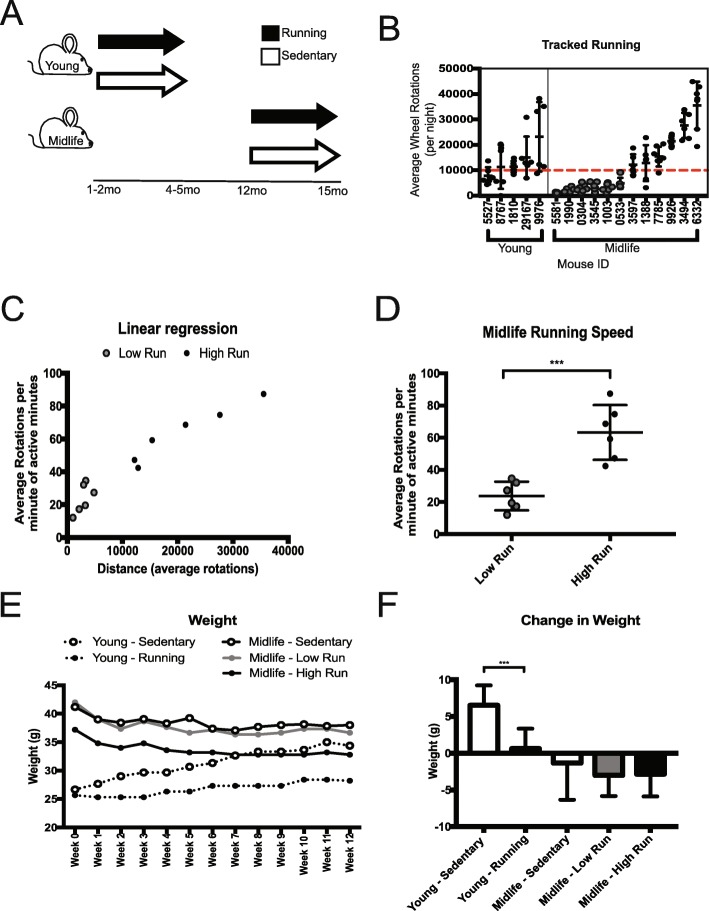Fig. 1.
Voluntary Running at young and midlife reveals natural variation in running intensity. a Experimental strategy of running mice. Young mice were given access to voluntary running wheels for 12 weeks starting at 1–2 months of age and ending at 4–5 months of age. Midlife mice were given access to wheels for 12 weeks starting at 12 months of age and ending at 15 months of age. b Average wheel rotations per night showed dichotomous response of midlife running. Midlife mice that ran below 10,000 rotations per night (red line), were deemed ‘Low’ (grey). Midlife mice that ran above 10,000 rotations per night, deemed ‘High’ (black). c Graph of distance vs speed showed differences between low and high running groups; all midlife high runners trended faster and farther than midlife low runners. d Midlife running speed between low and high runner groups showed a significant difference (p < 0.001). e Weight over the course of running experiment. f Change in weight of each cohort from start to end of the experiment (p < 0.001)

